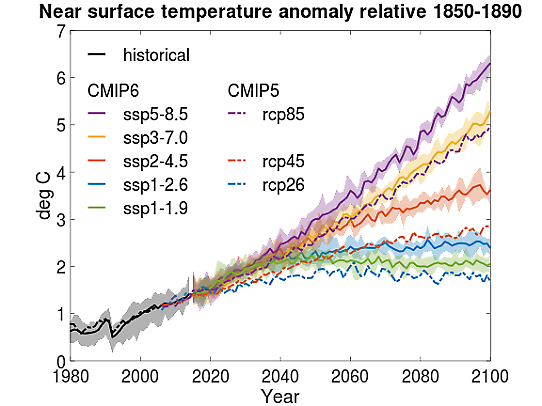After several years of development, researchers at SMHI’s Rossby Centre have now carried out the first calculations using the latest version of the global climate model EC-Earth. These calculations show how the climate is changing up until the year 2100, the end of this century. They are based on assumptions about future societal developments and volumes of greenhouse gas emissions.
“The latest climate calculations confirm that greenhouse gas emission volumes make a difference,” says Ralf Döscher, who leads SMHI’s climate modelling unit, the Rossby Centre. “They also show that warming is occurring at a faster rate than suggested by previous calculations.”

Investigating more rapid changes
The researchers are now investigating why the new calculations show a faster rate of climate change than previously suggested.
“Several models have produced similar results, indicating that warming is taking place at a faster rate, and this confirms the urgency of working to reduce emissions,” Ralf continues.
The biggest change can be seen in the far north, with temperatures in the Arctic rising much faster than the global average. This is affecting sea ice, which is reduced in all scenarios.
“If we follow the medium or highest emission pathways in the future, the Arctic sea ice will disappear completely during the summer,” says Torben Koenigk, Head of the Global Modelling Unit at SMHI’s Rossby Centre. “If we succeed in limiting warming, less ice will melt in the Arctic and, in particular, the local temperature increase in the Arctic will be less.”
The first step towards a complete climate service
The climate calculations are currently being analysed by researchers at the Rossby Centre, comparing them with calculations from other research teams who have carried out equivalent climate calculations within the CMIP6 international collaboration, where calculations from around thirty different climate models are being coordinated and compiled in a joint open database.
In future, it will be possible to interpret these climate calculations using a regional climate model, giving more detailed data about how the climate is changing in Sweden.
“Once the regional processing is complete, we will have sufficiently detailed data to present a climate service that can be used when making societal adaptations in line with a changed climate, for example,” adds Ralf. “In the meantime, it is best to continue using the data published via our climate services at smhi.se.”
The calculations also form the basis for new research that will be presented in scientific articles, and that will be evaluated in the next major climate report by the UN’s Intergovernmental Panel on Climate Change (IPCC) – AR6 – to be published in 2021-2022.
Data is already openly available in SMHI’s ESGF data node, where other researchers can download and use the material.